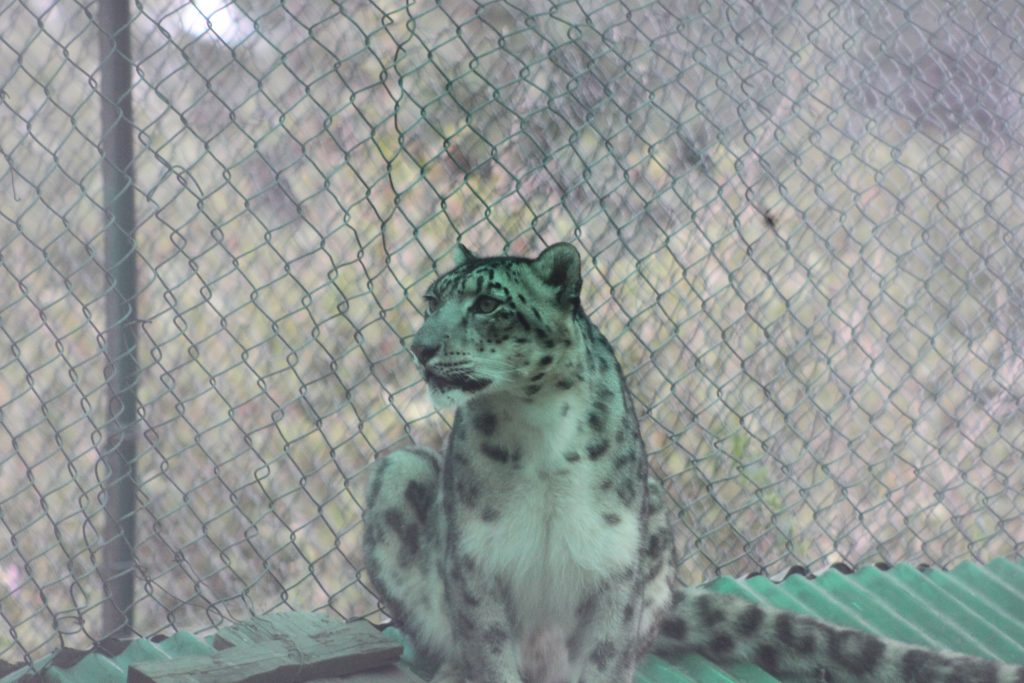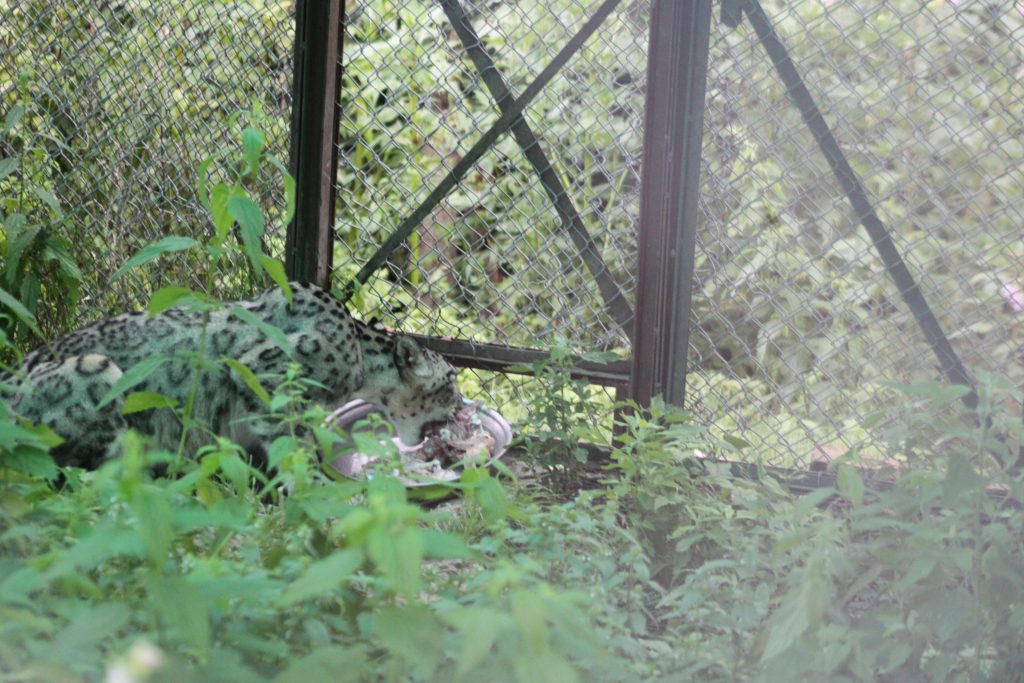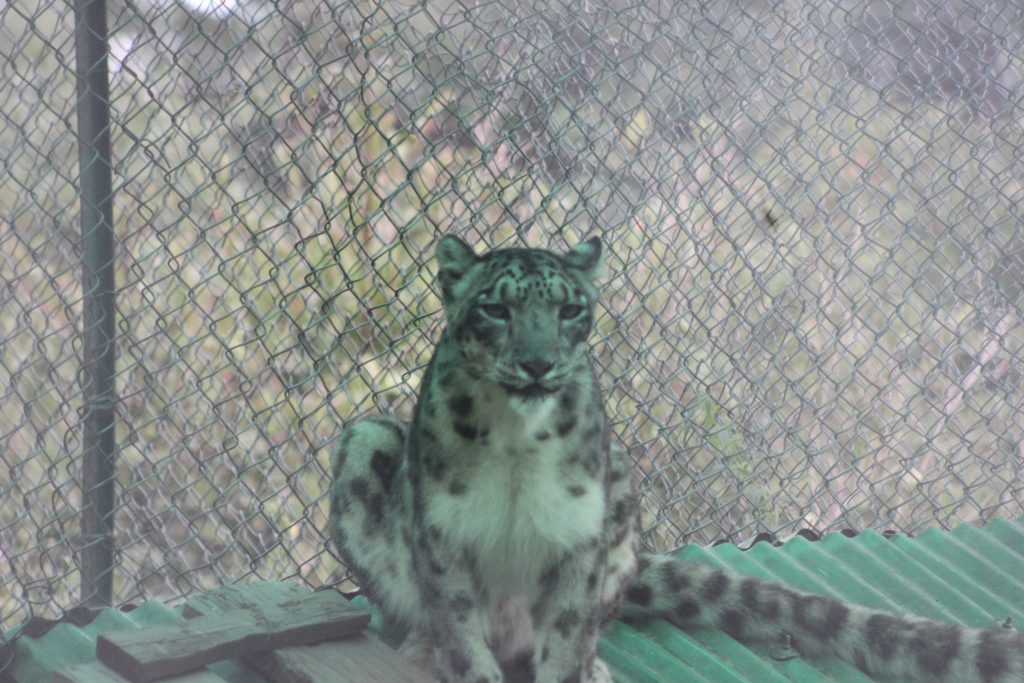Saving the Vanishing Snow Leopard
The majestic feline stares out soulfully at the world beyond. Meet Sundar, the only snow leopard in captivity. There is some talk of finding him a mate and hopefully breeding more leopards to save this endangered species. But there are many other factors in play.
Pakistan contributes less than one per cent of global carbon emissions. However, we are one of the countries most affected by climate change which is currently disrupting our fragile ecosystem and balance of flora and fauna. One of the species most threatened by this disruption is the magnificent snow leopard, the main keystone species in this region. A keystone species is a plant or animal that plays a crucial role in the way an ecosystem functions. Without a keystone species, the ecosystem’s natural balance would collapse and it would cease to exist. The snow leopard is on top of the Himalayan food chain and hence keeps the entire chain in check.
But with global temperatures warming up drastically, the mountainous and snowy habitat in which the leopards live is shrinking. Apart from the snow and glaciers melting, the tree line has increased in altitude, causing the decrease of low-lying plants which the snow leopard’s prey depend on for food. So the snow leopard’s prey population is diminishing causing the leopard to attack unprotected livestock.
I had the opportunity to see a snow leopard and have an in-depth conversation with his keeper at the Lalazar Wildlife Park Zoo in Khyber Pakhtunkhwa. Sundar was found in captivity of a private owner and the World Wildlife Fund (WWF) facilitated his transfer to the zoo where he has been living for six years now. Pakistan is home to some of the protected areas reserved for the snow leopard and their numbers are so few in these areas that locals can actually count how many leopards are left in the wild.
But even here at the zoo, snow leopards aren’t safe from the insensitivity and cruelty of humans. Looking into Sundar’s cage, one could see twigs, bags of chips and rocks lying inside. Clearly, people have little consideration for the graceful and powerful mammal prowling within. Visitors who had violated or disrespected Sundar or his space in any way were fined Rs. 1000, which is not a severe fine and does not deter observers from wreaking havoc in the snow leopard’s cage. Sundar’s keeper agreed that the fine given to the people was a meager punishment and he expressed pain and frustration over the behaviour of visitors. “People should have more respect for this majestic animal.” As for Sundar, he’d feel angry and provoked by these insensitive spectators. He would growl and sulk at them and eventually climb onto his perch. And even then, people would try to tease him by poking him with long sticks.
The artificial habitat Sundar was caged in was also extremely small, considering he is a snow leopard but according to his keeper; a new and larger cage has been built for him.
The majestic snow leopard once thrived in the cold and rugged mountainous areas of Pakistan. Known for the distinct clouded pattern on its fur and its long, furry tail, these creatures are the perfect targets for trophy hunting. The snow leopard has been classified as an endangered species since 2003 and snow leopards currently living in the wild number from 4, 080 to 6, 590. They can be found anywhere from Serbia and Russia to China and Mongolia. The cat is often killed for attacking livestock but besides this, many locals believe that the bones of the snow leopard have medicinal properties. A live snow leopard can fetch anywhere from $8 000-$25 000 while the fur cost around $15 000 on the international black market.
However, poaching is not common practice in Pakistan where the real threat to this majestic feline is from loss of habitat which leads to overlap with human territory. In fact, it is human factors like deforestation, tourism and pollution which are threatening the leopard. These three human activities aid in destroying the habitat of the snow leopards and all the species that exist alongside it. A growing population and the influx of immigrants has exacerbated the effect of these human activities. The locals of the area chop down trees for domestic use. Then there is the timber mafia which can clear an entire forest within a week. Unregulated tourism is perhaps the most destructive factor, due to the fact that the visitors leave garbage strewn all over the place. There is noise and light pollution and a once pristine habitat is destroyed.
If the snow leopard is to survive and its shrinking population expanded, it is imperative to educate the local population. Awareness about the unique importance and respect for this magnificent animal must be cultivated. The government must work towards creating more reserves and protecting existing habitats for endangered animals which will, in turn, create jobs for the local people in the region.
Islam strongly asks Muslims to treat animals with compassion and not to abuse them. “And the earth, He has assigned it to all living creatures” (Quran 55:10).The Qur’an states that wildlife, like humans, are created with purpose and that they too have a right to life, and protection from pain and suffering. We would do well to remember this.






